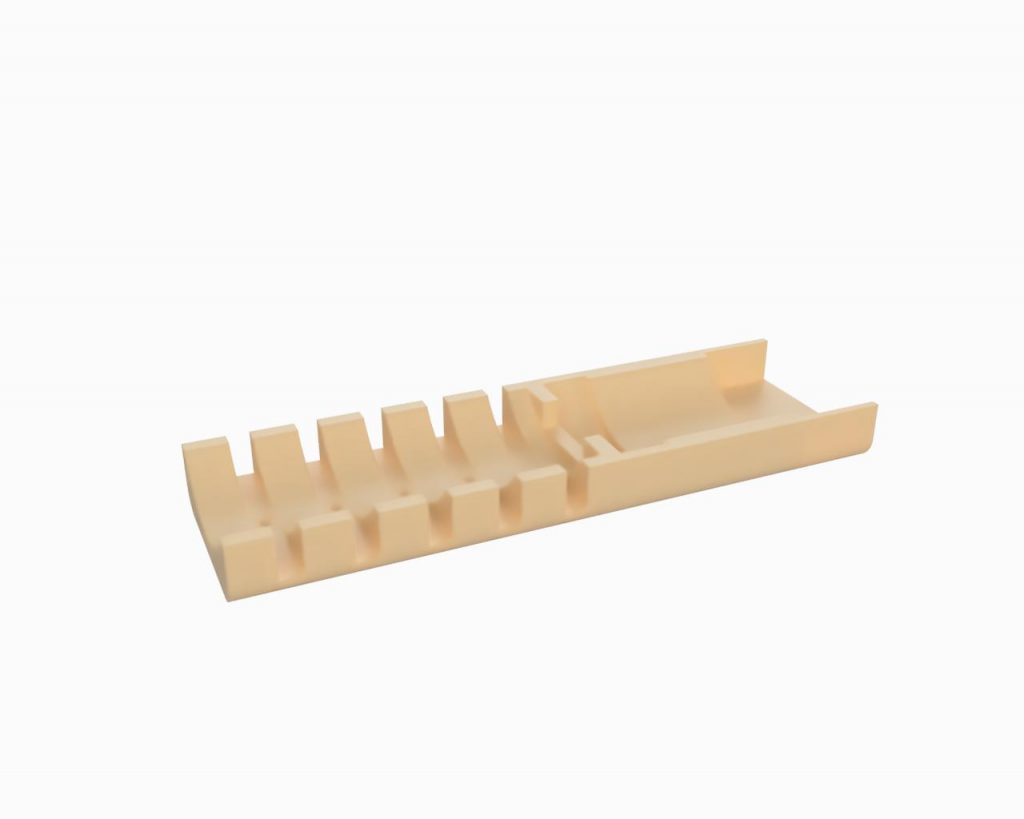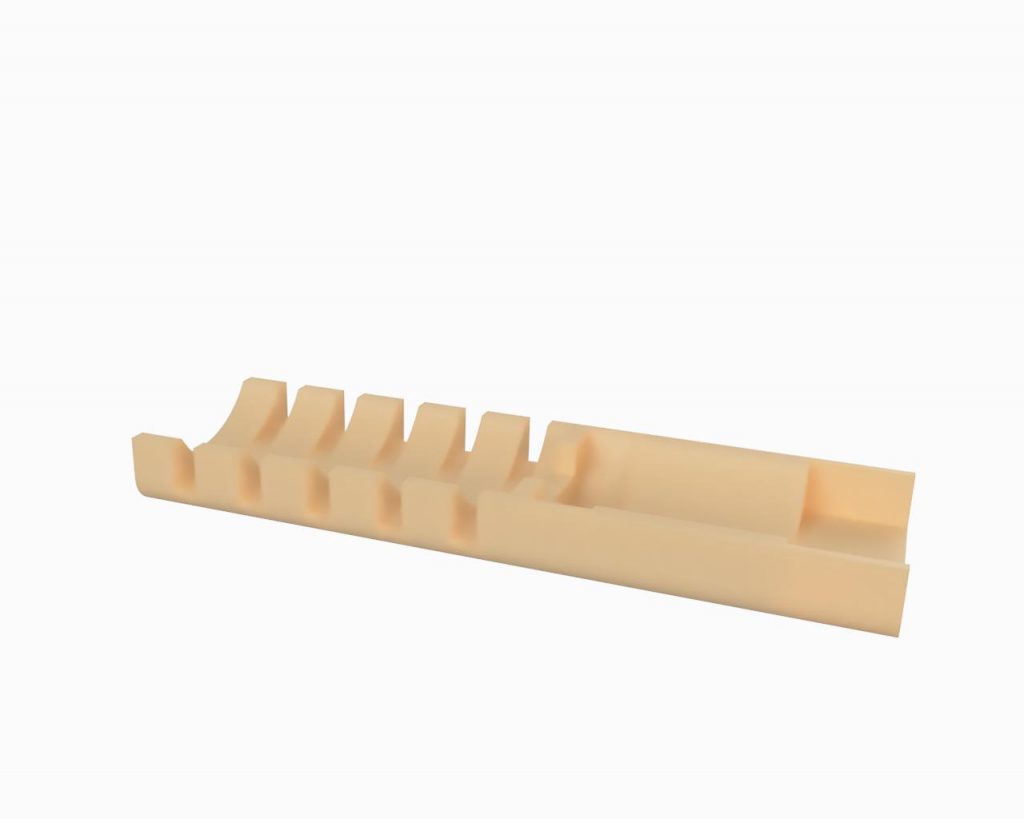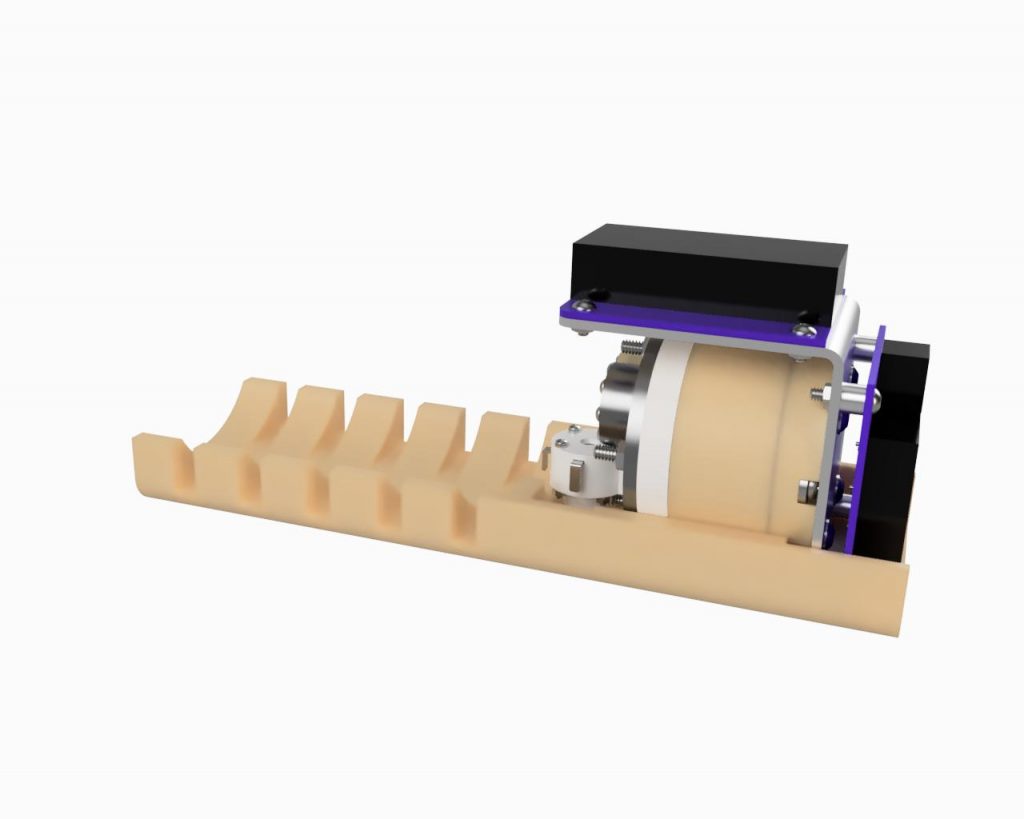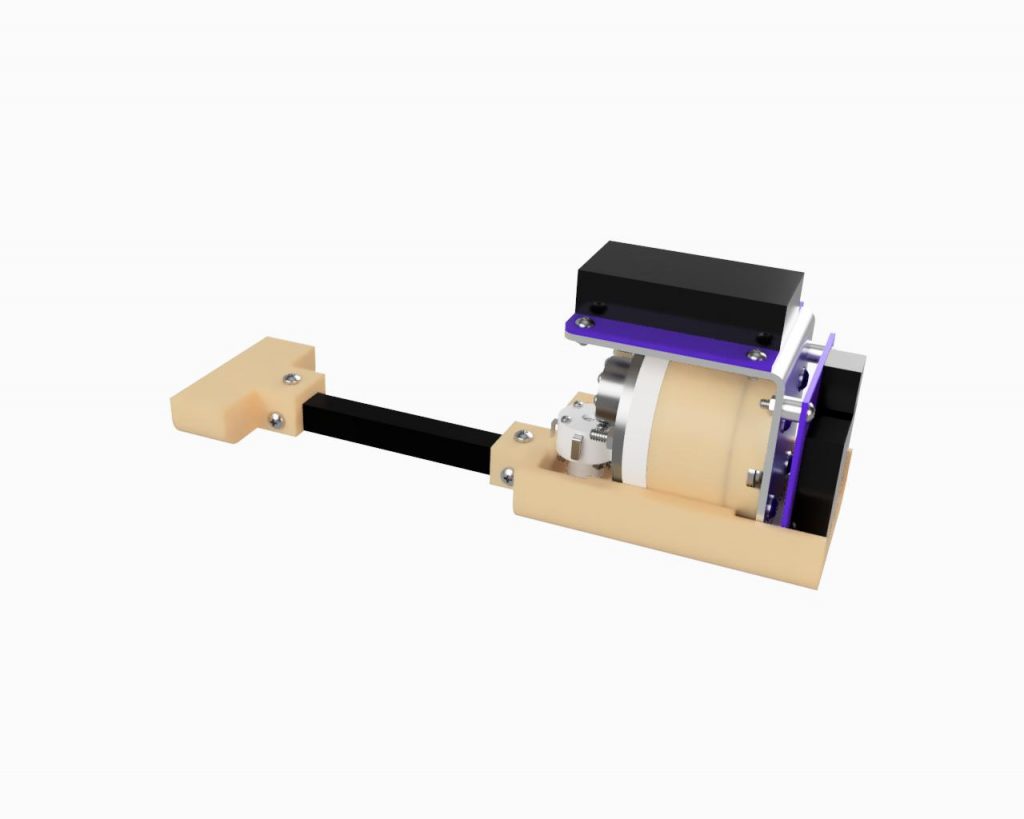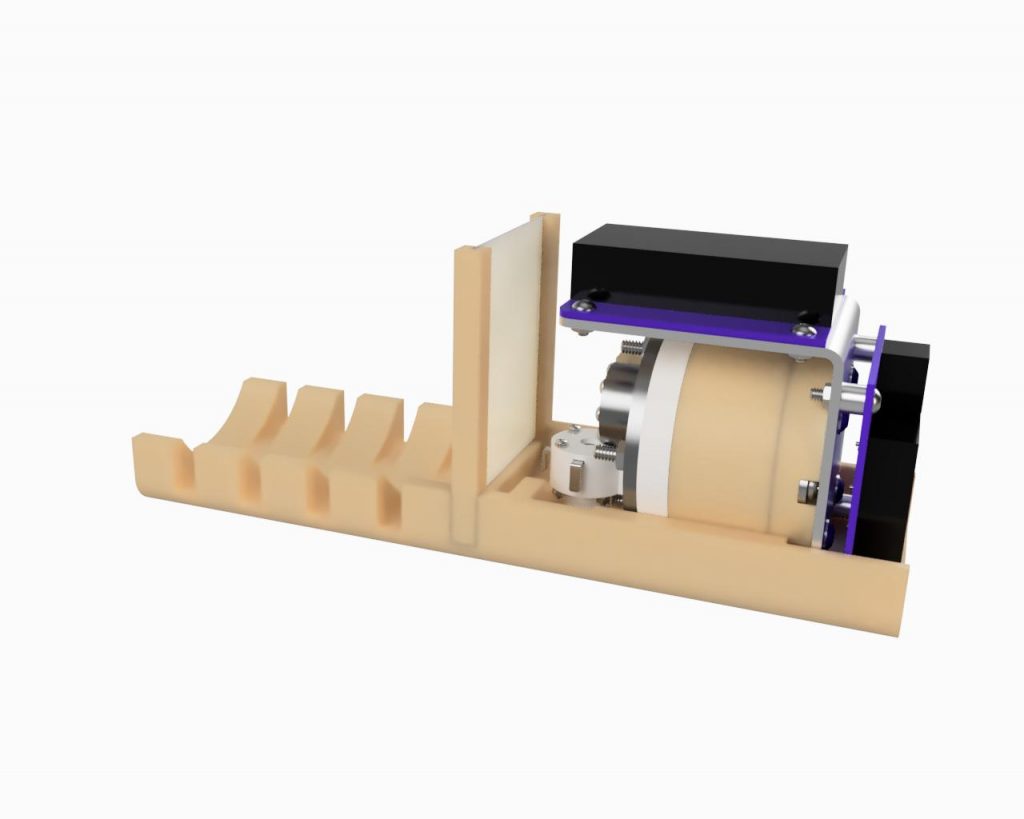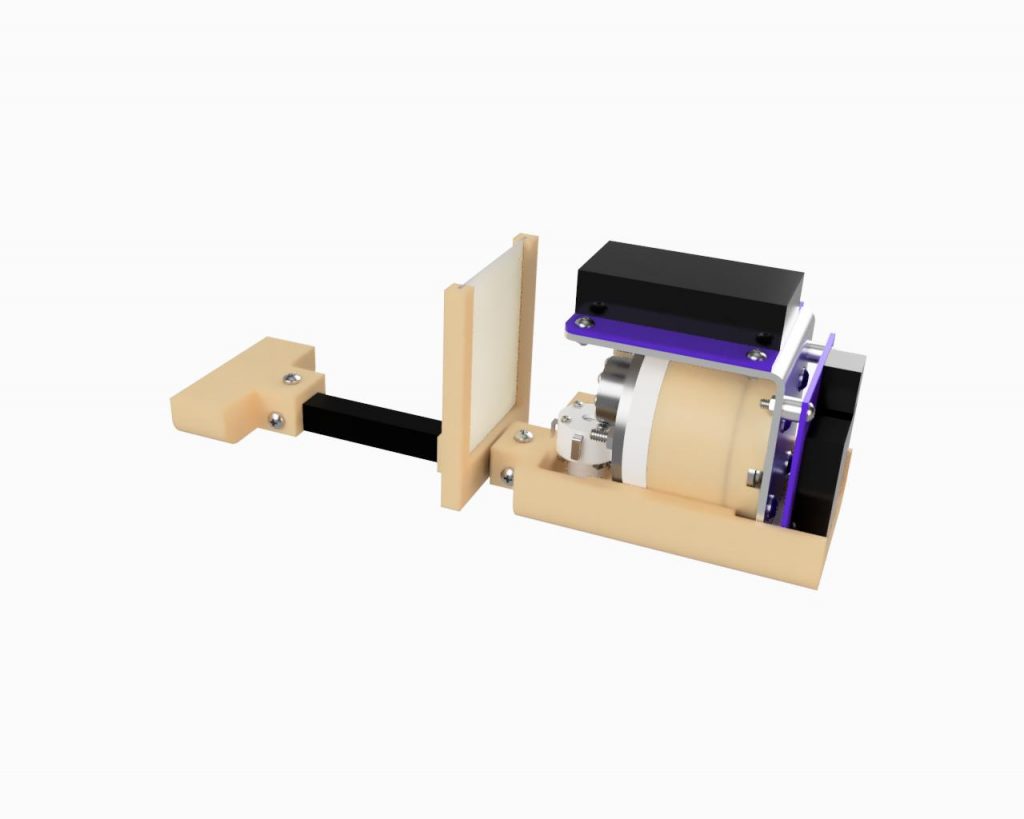Testing EP in a tiny chamber has really forced me to get creative. For my upcoming EHT1 tests, I have designed a modular multi-use test stand allowing me to align the Hall thruster for beam current, direct thrust via micro-pendulum, and plume divergence mapping. There are two versions of the test stand – the first relies on a solid 3D printed base, while the second refines the first design and utilizes MakerBeam to reduce the amount of 3D printing and further increase modularity. By splitting the base up, printing parts is more manageable and will essentially allow me to create a custom base for any thruster that fits in my current chamber.
Version 1 of the test stand uses a solid base 3D printed from Ultem. One end holds the EHT1 (shown here) and the AHT1 securely for testing. Along the length are various mounting slots/holes for various measurement modules and is sized to align the thruster output in the center of the chamber viewport.
In Version 2, the thruster mount remains the same, and the rest of the stand is replaced by a 10x10mm beam of MakerBeam, with a 3D printed foot piece at the end for stability and to keep the stand level in the chamber. With the central rail, modules can now be slid and positioned at any point, allowing for much for flexibility and modularity in the design.
The first module is the Faraday cup for beam current measurement. This is the same copper pipe cap cup I have used for prior testing. Mounting holes in the base allow me to adjust it’s position relative to the thruster output. This module is key for ignition testing.
The next module improves upon my first micro pendulum used with the gPPT Series. This pendulum has over 2.5″ of length, much more than my original design, and is far easier to align. By briefly firing the thruster, I can take direct force measurements by measuring the deflection.
Finally I am employing a very simple, old-school, yet effective technique from the particle physics field for plume divergence. A holder with removable screen can be placed at various lengths. By blasting the screen I can measure divergence looking at the erosion pattern.

